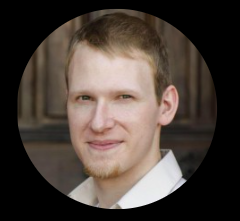Quick Announcement:
Registration is now open for the September Event: Workshop and Retreat for Creatives
Happy News, my friends!
June 10 I will air an episode where I interview Sarah Bessey (author of the provocatively titled “Jesus Feminist”…find out what it really means.) This interview has some great gems in it about the process of creation, and some of Sarah’s story that got her to move from blogger to successful author. So, look for that and the shownotes here next week!
SHOWNOTES:
Episode 11 -An interview with Daniel J. Lewis.
Podcast: Play in new window | Download (Duration: 21:12 — 29.1MB) | Embed
Subscribe to Spark My Muse Apple Podcasts | Spotify | Email | TuneIn | RSS | Subscribe to Spark My Muse
Today we welcome podcast expert, the creative and enterprising Daniel J. Lewis. If you are new to the show, and maybe a fan of Daniel’s, thanks for stopping by and spending some of your time with me!
This episode is sponsored by Sparky’s Jumpstarter Marketing Kit.
Tools, strategies, and action steps to make digital, internet marketing simple and affordable.
Get it free using the promo code spark while supplies last.
To be a sponsor click on the Patreon logo (left sidebar). Thousands of people are listening. Reach them and spark their muse!
Wine Segment:
Today, Daniel and I talk about the impact of marriage on personal growth….so I decided since it’s “wedding season” I’d feature a wedding-related wine segment.
What Wine pairs well with wedding cake?
Rule of thumb: The wine should be sweeter than the cake.
Wine from green grapes goes well with lemon cake.
Bittersweet chocolate cake pairs best with an off-dry red.
Do you have questions about wine grapes or wine?
Send them to me.
Click HERE to send a voice message!
Sparking your Muse
Today, I am very happy to interview the prolific Daniel J Lewis!

You may notice improved audio in this episode!
That’s because Daniel graciously furnished me with professional audio tracks of it and I am grateful. He’s been at podcasting for a while and I aspire his professionalism. If you like the show and want to help me upgrade my equipment and improve the quality of every show–take a gander at the plea at the bottom of the shownotes!
I was so glad to connect with Daniel because through his website I found a way to make podcasting my own show a reality.
Interview:
MINUTE 3:30
Who is Daniel J Lewis?
(I ask Daniel to tell you himself. With dozens of interviews under his belt, he’s great at this stuff.)
4:10 How Daniel got started in podcasting.
6:50 His roots of faith and his unique upbringing as an influence for a spiritually integrative creative process.
(Yes, I too was homeschooled…until 7th grade.)
9:20 on Creative slumps
Col 3:23 Whatever you do, work at it with all your heart, as working for the Lord, not for human masters, 24 since you know that you will receive an inheritance from the Lord as a reward. It is the Lord Christ you are serving.
10:37 On how our Worldview influences our creative process
11:50 A creative life of service to others
12:40 on creation (process) not beginning and ending with us.
13:00 Biggest surprises in his marriage
15:00 The purifying nature of the institution of marriage
15:30 The application of knowledge, not knowledge itself, is what matters
17:00 Best advice lately? Function on the assumption of love.
18:00 Long-term marriage commitment as a method for growth
19:00 Higher education and finding other options
19:30 How formal education and degrees are less important than experience (in the digital age).
19:45 The message is key to creation (and to podcasting)
20:00 “Don’t wait to be perfect before you start!”
20:20 “The Perfect is the enemy of the finished…”
21:00 On learning perseverance from messing up and moving on.
All month long (June, 2015) you can advertise on the show for just $25 (per show). Spark My Muse is heard in all 50 states and 74 countries world-wide! Use the contact page to express your interest.
Thank you for listening today and for reading the shownotes!
I’d love to hear from you and I hope you’ll subscribe to the podcast and consider sponsoring the show. $1 per episode is a great place to start.
Want to “buck up”?
• Learn more here and find out the perks patrons get. :)
People in all 50 of the United States of America and those 74 countries listen to the show!
But, who’s really listening to Spark My Muse and why?
For that I need your help.
Please take part in this anonymous 30-second listener-survey so I can continue the show.
And if you’d like to be an advertising sponsor and reach thousands of new people each month, please contact me!



 There is a balancing act for those of us with a creative spirit and a thoughtful disposition. We totter between hope and cynicism. This is the ongoing waltz, or slam dance.
There is a balancing act for those of us with a creative spirit and a thoughtful disposition. We totter between hope and cynicism. This is the ongoing waltz, or slam dance. 